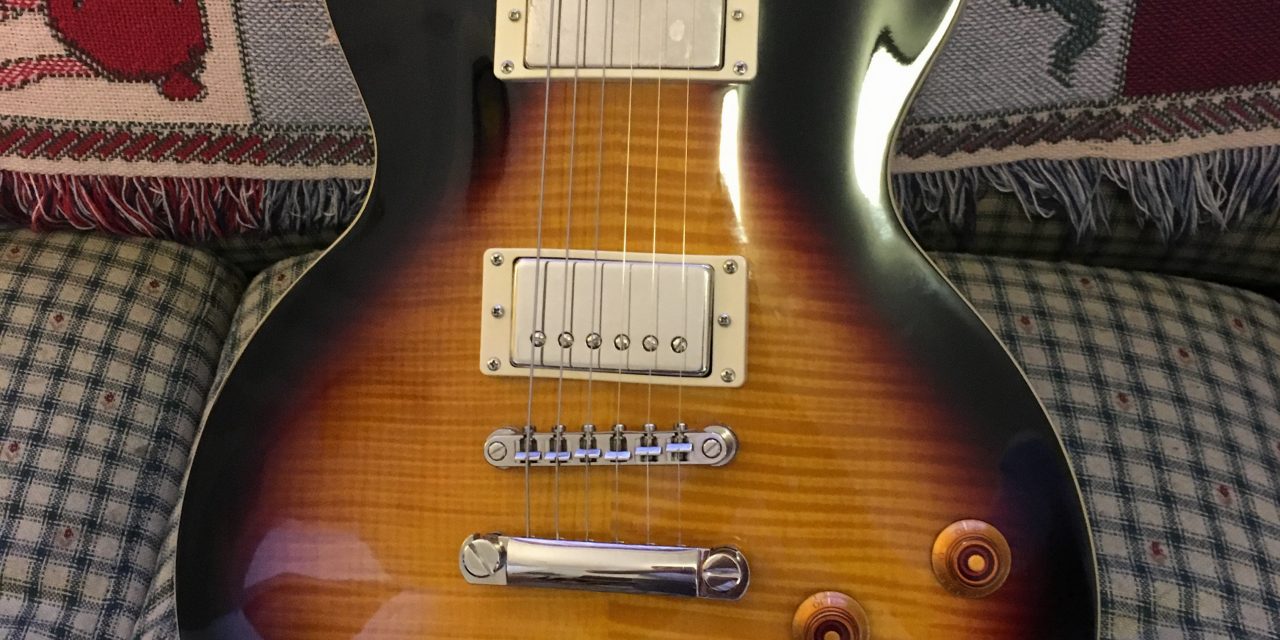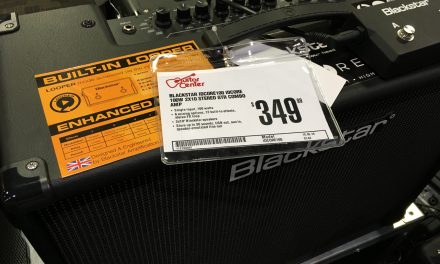Long time no write!
I’m a very busy guy. I’m doing a lot of web development – about 60 hours a week – plus the typical family stuff that you do when you have a wife/kids/dog. But I wanted to write a little bit about my latest project – refretting my Epiphone Les Paul. Specifically the one I bought at the 2017 Orlando International Guitar Convention for $225.
There was some fret wear that was causing a bit of buzzing, so initially I decided to level and re-crown the frets. But leveling the frets showed me something was a little off. By the time I got the frets flat, I didn’t feel they were high enough. Did that mean the frets had been leveled and crowned previously? I doubt it, on a guitar that someone sold for $225. But you never know. Regardless, I decided to do a refret, but I wanted bigger frets. I wanted jumbo frets.
So I ordered them. I used Fender jumbo fret wire that was pre-cut. Oh, I hear the luthiers out there rolling their eyes. It’s fine. But because this guitar has binding (which I personally dislike,) I had to nip some fret tang away from each end of the frets, and I also measured and cut them in order and put them in a block of styrofoam numbered 1 – 24. This took a while to do, actually. I don’t have a fret tang nipper, but I’m starting to think I really should buy one. It would have saved time. Instead I used my fret cutter from StewMac.
The next step was to pull the frets. I heated up my soldering iron, and applied heat to the first fret, and… it came out super easy. Second fret, same thing. I stopped using the soldering iron because I didn’t need it. Every fret popped out super easy. Is that a bad thing?
Well… yes and no. How solid was the fret in the wood? How much empty space was there below the fret? This is a factory production guitar. Still, it almost seemed like the frets were barely seated. When I put the new frets in, I used superglue because I wanted them to be seated better. The theory is that when you superglue the frets in, the guitar has more sustain. I have no idea if that is actually true, but it certainly helps keep the frets stable.
I used medium superglue with a whip tip that I got at Hobby Lobby. Which closes at 8 pm on a Friday night. Which I found odd. But I was happy to find thin, medium, and regular superglue available and I bought all three. Water thin superglue is incredibly useful.
Anyway, last night while rewatching Sherlock on Netflix I put in the frets. For each fret I applied medium superglue to the slot, then placed the fret, then hammered the fret in place, and then wiped up any residual superglue from the fretboard. There wasn’t much at all – I didn’t overfill the slots. If this guitar didn’t have binding I would have run some superglue under the frets, but I’m not messing with the binding. I’m just a hobbyist.
Then I set the guitar aside overnight, because even though superglue dries in 10-20 seconds, I wanted to let the neck sit and adjust to its new frets. I went to bed and got up this morning and typed this blog entry. Today I will cut off the fret ends and then file the ends flat. Then I’ll file a bevel into the fret ends. Once that’s done, I’ll do the level/crown, and then round the fret ends with the fret end file, and then it’s time for strings. Not sure I’ll get it all done today – might be today and tomorrow. I have a lot of web dev work to do this weekend, also. But I’ll post part two once I’ve done it.





